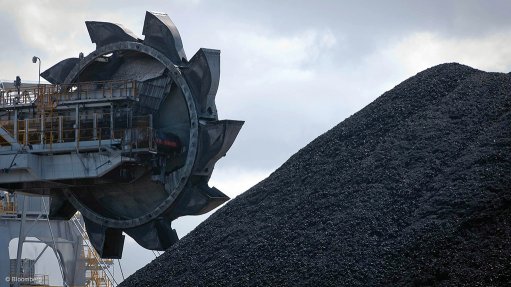
PERTH (miningweekly.com) – The International Energy Agency’s (IEA’s) latest World Energy Outlook (WEO) update holds good news for Australian coal producers, estimating that demand for coal in the Asia Pacific will increase by 492-million tonnes of coal equivalent by 2040.
Federal Resources Minister Matt Canavan noted that Australia’s proximity to these markets meant that the local coal industry was well placed to meet this growing demand.
“These figures show a bright future for Australia’s coal industry. They’re also a short, sharp shock for those who have set out to destroy confidence in our world-class coal industry. Coal is here and it’s here to stay.”
Canavan said the IEA had forecast Australia’s net exports of coal would grow by 20%, to about 430-million tonnes of coal equivalent, by 2040, with nearly half of those exports expected to be metallurgical coal.
“Australia is the only exporting coal producer projected to significantly ramp up coal production over the period to 2040, supported by its strong resource base and proximity to Asian markets,” he said.
Other positive results from this year’s WEO include a growing international metallurgical coal market, especially in Asia, with Australia well positioned to meet demand.
Australia’s production is also forecast to exceed that of the US by the late 2020s, with more than 40% of coal produced in Australia expected to be sourced from new mines in 2040.
The new report also stated that the increased demand for coal would see the development of new coal basins in Australia, like the Galilee basin, Canavan said.
“All of this will require new mines, ports and other transport infrastructure to be developed, including in the Galilee basin. This is great news for the Australian economy, and for the tens of thousands of Australian coal workers and their families.”
The Queensland Resources Council (QRC) said that the state’s resources industry could play an increasingly important role in powering the global economy, with CEO Ian Macfarlane noting that the region’s gas industry could also power both domestic industry and international markets, with natural gas set to become the second-largest fuel in the global energy mix by 2030.
Australia’s liquefied natural gas (LNG) exports will almost double from current levels to reach around 108-million tonnes by 2040.
“By 2040, China’s gas demand is expected to triple to 710-billion cubic metres (around 26 500 PJ), making it the world’s largest gas-importing nation, putting it on track to surpass Japan as the world’s largest LNG importer by around the middle of the next decade,” Canavan said.
“Alongside the WEO’s expected resurgence in demand for coal, these forecasts put Australia in the box seat when it comes to benefiting from global demand for gas. We are very well positioned to play a major role in meeting the increasing global demand for LNG – most of which will be in our region.”
Canavan said that the figures also reinforced the importance of ongoing investment in Australia’s LNG sector.
“We currently export around 58.5-million tonnes of gas, with that figure expected to almost double in the next 20 years or so.
“Around A$200-billion has been in invested in LNG production in Australia over the last decade, and we are on the eve of opening INPEX’s onshore LNG processing facilities in Darwin, which at peak production will produce and export around 8.9-million tonnes of LNG and around 1.65-million tonnes of liquefied petroleum gas per year, for an expected 40 years.
“September’s Resources and Energy Quarterly only adds to the confidence in the sector, forecasting an increase in the value of Australia’s LNG exports from A$31-billion last financial year to A$48-billion in 2019/20, driven by higher export volumes and higher prices.
“An even more exciting prospect is the expectation that future gas supplies will increasingly come from unconventional sources, with global shale gas production set to increase by 28 700 PJ per year by 2040, making our Beetaloo basin an enticing prospect for development as a new world-class shale gas province,” the Minister said.